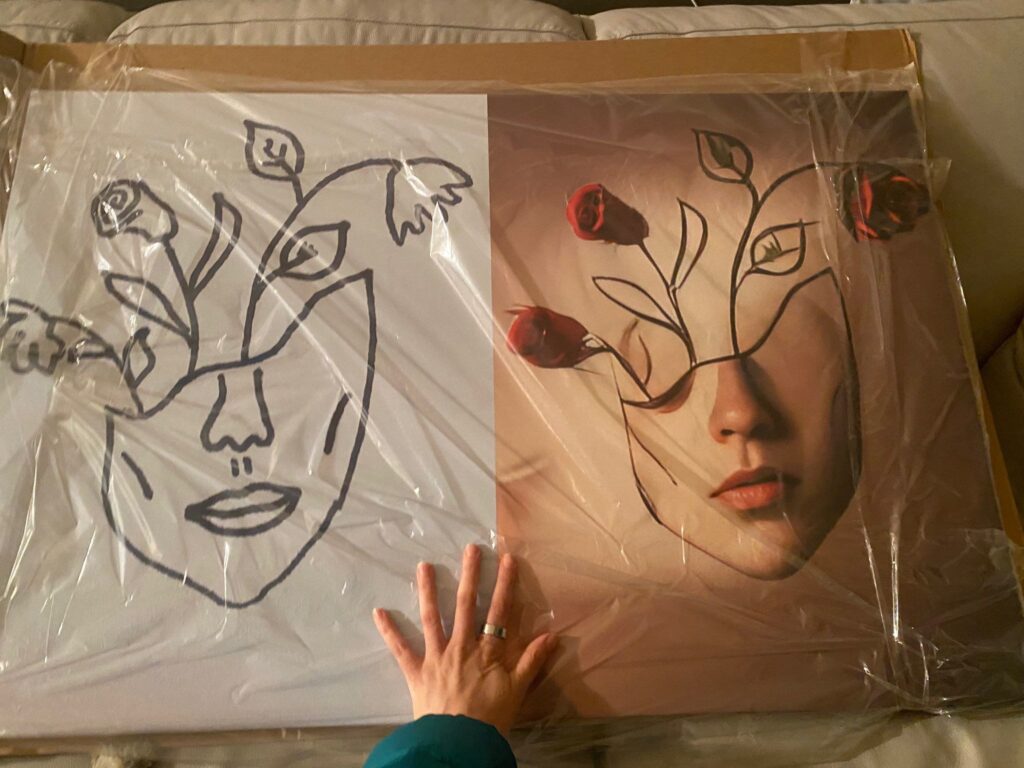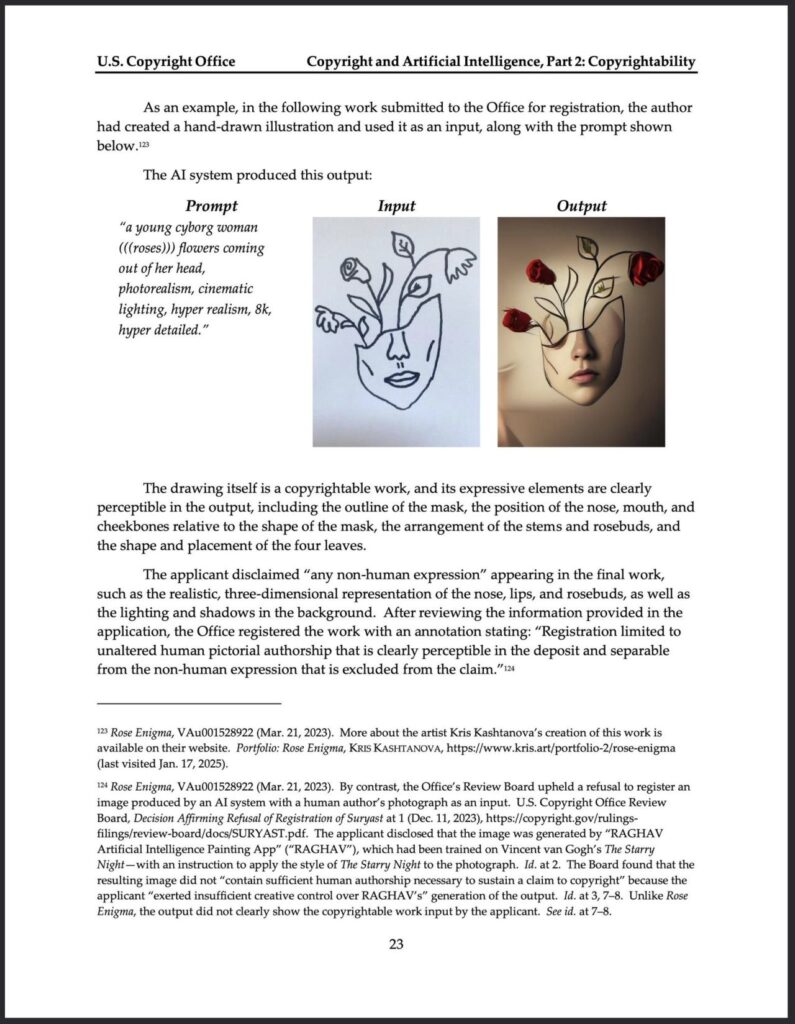In March 2023 I examined how the U.S. Copyright Office was developing a novel “hybrid copyright” doctrine through its groundbreaking decision in the Zarya of the Dawn case. Nowadays, with the 2025 report’s publication, we can observe how this doctrinal framework has matured, particularly through the same author’s Kris Kashtanova subsequent Rose Enigma registration.
From Binary to Hybrid Protection
The Doctrinal Evolution In early 2023, I posited that a hybrid form of copyright – protecting the overall skeleton of the work while excluding its AI-generated constituent parts – was emerging as a pragmatic solution to the AI-authorship conundrum. The Copyright Office’s approach in Kashtanova’s Rose Enigma case not only validates this analysis but demonstrates significant doctrinal refinement.
My 2023 legal examination identified three key elements that would form the basis of hybrid protection:
- Protection of human-authored textual elements
- Recognition of creative arrangement and selection
- Exclusion of purely AI-generated components
The 2025 report has expanded this framework while maintaining its fundamental structure, confirming my initial doctrinal analysis of the necessity for a “flexible but well-defined legal axis.“
Where U.S. Copyright Office copyright office 2023 analysis characterized Midjourney-generated images as “the result of a mechanical and not a creative process,” the current doctrine has evolved toward a more nuanced evaluation of human creative intervention. This shift confirms my initial assessment of the need for a fluid legal framework capable of adapting to technological advancement.
Case Study: Kashtanova’s Legal Journey
The progression from Zarya to Rose Enigma provides a unique opportunity to examine the evolution of hybrid copyright doctrine through works by the same author. While my 2023 analysis focused on the categorical exclusion of AI-generated elements, Rose Enigma demonstrates how the doctrine has evolved to recognize more subtle forms of human authorship.

The earlier legal assessment suggested that “significant modification with a graphics processing program” could provide a pathway to copyright protection. The Rose Enigma registration validates this interpretation while adding important nuances to the doctrine’s practical application.
Technical Analysis of Current Standards The 2025 framework has refined several elements that I identified in 2023:
- Qualitative assessment of human intervention
- Recognition of creative selection processes
- Protection of substantial modifications
- Integration of human and AI contributions
Comparative Doctrinal Analysis Examining the evolution from my 2023 legal analysis to the current framework reveals:
- Greater sophistication in evaluating human contribution
- More nuanced approach to hybrid works
- Refined criteria for registration
- Enhanced recognition of creative processes

Future doctrinal development and Legal implications
While my 2023 analysis anticipated jurisprudential evolution, the Copyright Office has taken a more active role in developing the hybrid copyright doctrine.
The evolution of hybrid copyright protection from 2023 to 2025 reveals a significant maturation in copyright doctrine regarding AI-assisted works. The Copyright Office’s journey from Zarya of the dawn to Rose Enigma demonstrates a sophisticated progression in understanding and evaluating the intersection of human creativity and artificial intelligence.
Several key developments merit particular attention:
- First, the refinement of evaluation criteria for human contribution has moved beyond simple binary distinctions to embrace a more nuanced understanding of creative processes. This evolution reflects both technological advancement and deeper institutional understanding of AI-assisted creation.
- Second, the establishment of clear doctrinal guidelines for hybrid works provides creators with more certainty while maintaining necessary flexibility. The Rose Enigma case exemplifies how these guidelines can accommodate complex works that combine human creativity with AI assistance.
- Third, the preservation of fundamental copyright principles – particularly the requirement of human authorship – while adapting to technological change suggests a sustainable path forward for copyright law in the AI era.
The framework established through these developments appears sufficiently robust to accommodate continued technological evolution while protecting genuine creative expression. The hybrid copyright doctrine has emerged as a pragmatic solution to contemporary challenges in copyright law, becoming a model for how legal frameworks can adapt to technological change while preserving essential protections for human creativity.



